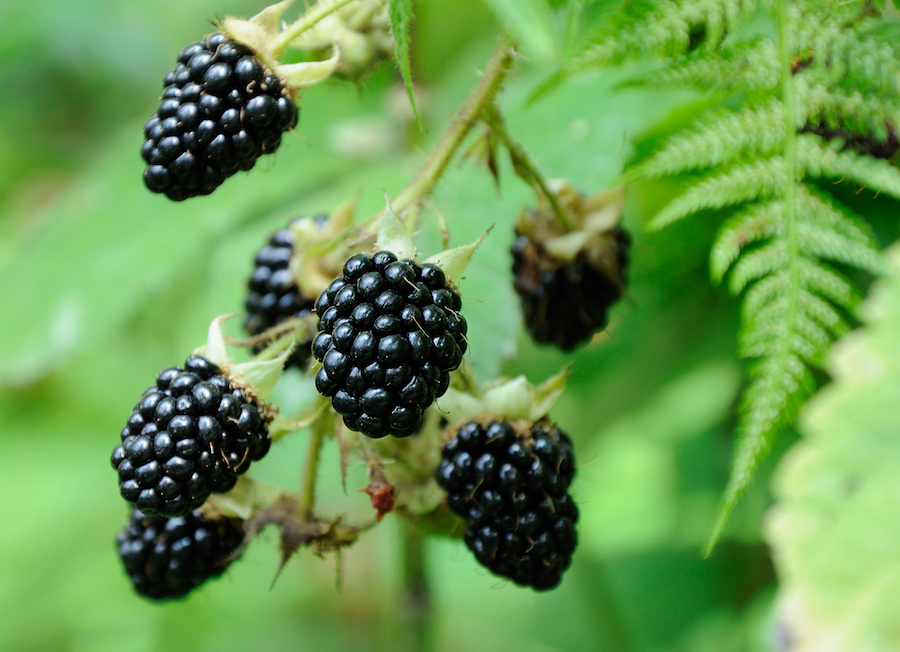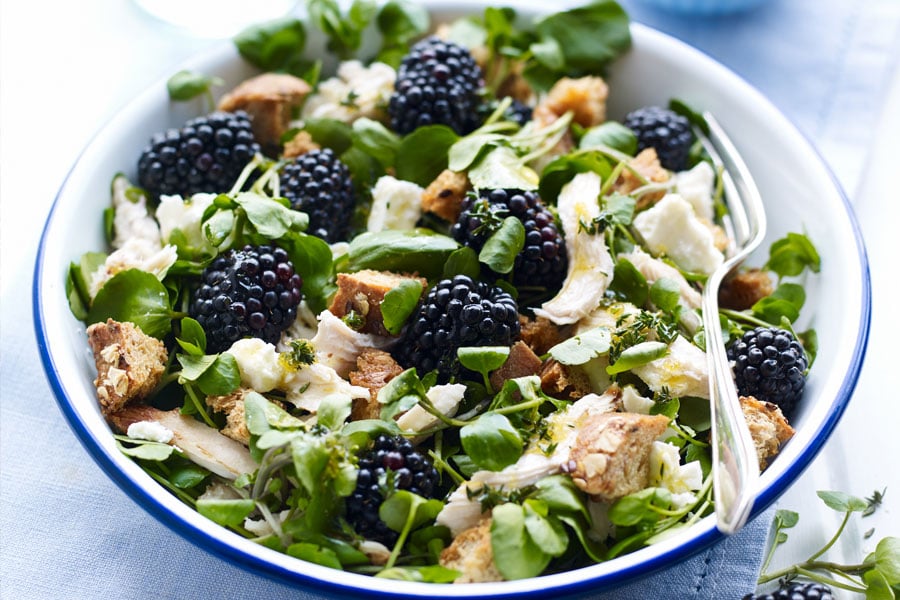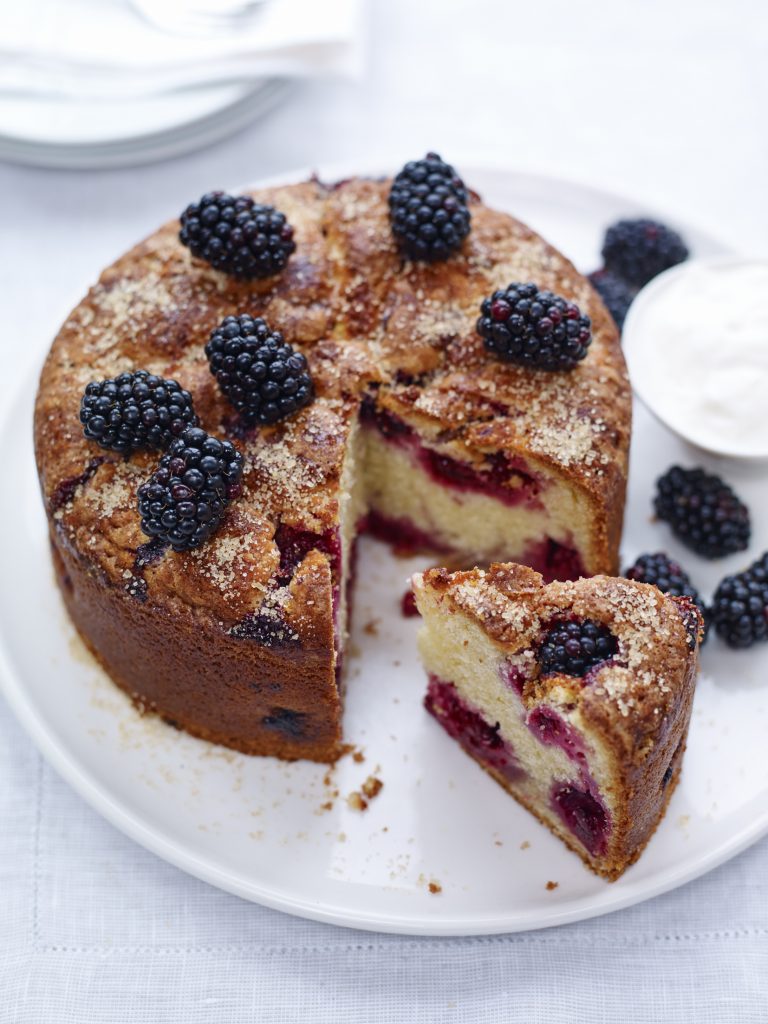It's that time of the year when our blackberries are ready to pick. Found this interesting article on the health benefits.
Blackberries are a delicious and nutritious fruit known for their deep purple hue and sweet-tart flavour.
Beyond their culinary versatility, blackberries are packed with essential nutrients and powerful antioxidants that offer a range of health benefits.
In this feature, we’ll explore the numerous advantages of incorporating blackberries into your diet.
Also read – How to grow your own blackberries
Nutritional Profile
Blackberries are low in calories but high in vital nutrients, making them an excellent addition to a healthy diet. A one-cup serving (about 144 grams) of blackberries contains approximately:
- Calories: 62
- Protein: 2 grams
- Carbohydrates: 14 grams
- Fiber: 8 grams
- Vitamin C: 50% of the Recommended Daily Intake (RDI)
- Vitamin K: 36% of the RDI
- Manganese: 47% of the RDI
- Folate: 9% of the RDI
Additionally, blackberries provide small amounts of Vitamin A, Vitamin E, copper, magnesium, and potassium.

Health Benefits
1. Rich in Antioxidants
Blackberries are loaded with antioxidants such as anthocyanins, ellagic acid, and resveratrol. These compounds help protect the body from oxidative stress caused by free radicals, which can damage cells and lead to chronic diseases like cancer and heart disease. The high antioxidant content in blackberries can help neutralise these harmful molecules, reducing the risk of disease.
2. Promotes Heart Health
The antioxidants in blackberries, along with their high fiber content, contribute to heart health. Fiber helps lower cholesterol levels, which can reduce the risk of cardiovascular disease. Furthermore, the potassium and magnesium in blackberries help maintain healthy blood pressure levels.
3. Supports Digestive Health
Blackberries are an excellent source of dietary fiber, which aids in digestion by promoting regular bowel movements and preventing constipation. The fiber in blackberries also acts as a prebiotic, feeding the beneficial bacteria in the gut and promoting a healthy microbiome.
4. Boosts Immune System
The high vitamin C content in blackberries supports the immune system by stimulating the production of white blood cells and enhancing the body’s ability to fight infections. Vitamin C also acts as an antioxidant, protecting immune cells from damage.
5. Improves Brain Function
Blackberries may benefit brain health and improve cognitive function. The antioxidants in blackberries have been shown to reduce inflammation and oxidative stress in the brain, which can help improve memory and delay age-related cognitive decline.
6. Promotes Healthy Skin
The vitamins and antioxidants in blackberries contribute to healthy, radiant skin. Vitamin C plays a crucial role in collagen production, helping maintain skin elasticity and reducing the appearance of wrinkles. The antioxidants also protect the skin from damage caused by UV rays and environmental pollutants.
7. Supports Bone Health
Blackberries contain important nutrients like vitamin K and manganese, which are essential for maintaining healthy bones. Vitamin K is necessary for bone metabolism and helps prevent osteoporosis, while manganese is involved in the formation of bone cartilage and connective tissue.
Tips for Enjoying Blackberries
Incorporating blackberries into your diet is easy and can be done in a variety of ways:
- Fresh: Enjoy blackberries as a snack or add them to yogurt, porridge, or cereal.
- Smoothies: Blend blackberries with other fruits and vegetables for a nutritious smoothie.
- Salads: Toss blackberries into salads for a burst of flavour and color.
- Baking: Use blackberries in muffins, pies, and crumbles for a sweet treat.
- Preserves: Make homemade blackberry jam or jelly to spread on toast.
Blackberries are a powerhouse of nutrition, offering numerous health benefits that support overall well-being. Their rich antioxidant content, along with essential vitamins and minerals, make them a valuable addition to a balanced diet. Whether eaten fresh, blended into smoothies, or baked into desserts, blackberries are a delicious way to enhance your health.
Blackberry and Coconut Parfait
https://www.silversurfers.com/health/diet-exercise/the-health-benefits-of-blackberries/













